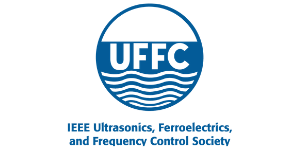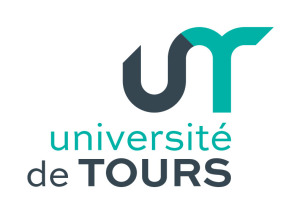Karin Rabe is a computational materials physicist with a particular interest in the use of first-principles quantum-mechanical calculations for the study of phase transitions and the theoretical design of new materials. Born in New York City, she attended the Bronx High School of Science and majored in physics at Princeton University. She received a Ph.D. in physics from Massachusetts Institute of Technology (1987) with thesis supervisor John Joannopoulos. Following two postdoctoral years in the theory department at AT&T Bell Laboratories, she joined the Department of Applied Physics and the Department of Physics at Yale University, with tenure in 1995, and moved to the Department of Physics and Astronomy at Rutgers in 2000, where she was promoted to Board of Governors professor of physics in 2013. She served as president of the Aspen Center for Physics from 2013 to 2016. Her recent professional recognition includes fellowship in the American Physical Society (2003), the David Adler Lectureship Award in the Field of Materials Physics from the American Physical Society (2008), fellowship in the American Association for the Advancement of Science (2011) and membership in the American Academy of Arts and Sciences (2013) and the National Academy of Sciences (2013).
Presenter Type: Tutorial
Dr Alexei Gruverman is a Charles Bessey Professor at the Department of Physics and Astronomy, University of Nebraska-Lincoln. His research interests are in the field of scanning probe microscopy of functional materials, electronic phenomena in ferroics, and information storage technologies. Dr Gruverman has a diverse set of expertise acquired in a leading semiconducting company and academic research environment in prominent universities in USA, Europe and Asia. Prior to joining UNL, he held research scientist positions at the Joint Research Center for Atom Technology in Tsukuba, Japan, and at Sony Corporation, Yokohama, Japan, and research professorship position at the North Carolina State University, USA. He has co-authored over 240 papers in peer-reviewed international journals (WoS h-index 65) including Science, Nature Materials and Physical Review Letters, which were cited more than 16,000 times, a number of book chapters and review articles and has edited three books and several special journal issues on ferroelectricity. He is a recipient of the 2004 Ikeda Foundation Award, ISIF 2010 Outstanding Achievement Award, IEEE 2017 Ferroelectrics Recognition Award and Humboldt Research Award in 2020. He is a Fellow of the American Physical Society and an International fellow of the Japan Society of Applied Physics. Among his most important scientific accomplishments is the development of Piezoresponse Force Microscopy, manipulation of ferroelectric domains at the nanoscale, development of an approach for fast switching dynamics in ferroelectric capacitors, demonstration of the tunneling electroresistance effect in ferroelectrics, and nanoscale studies of electromechanical behavior of biological systems.
Dr. Trassin received his PhD degree from the University of Strasbourg France in 2009. From 2009 to 2013 he carried out his post-doctoral research work in the Materials Sciences and Engineering department of the University of California Berkeley, then, he joined the ETH Zurich as a Lecturer. He is now running the Nonlinear optics for Epitaxial growth of Advanced Thin films (NEAT) group in the Materials Department, at the ETH. Dr. Trassin is leading a research team focusing on oxide interfaces and epitaxial ferroelectric and multiferroic thin films. His research involves the thin film growth by pulsed laser deposition and the advanced characterization of their domain structures. Dr. Trassin is pioneering the investigation of thin films functionalities in-situ, during the epitaxial synthesis, using an unprecedented combination of experimental techniques.
Jorge Íñiguez is a lead researcher at the Luxembourg Institute of Science and Technology and affiliated professor at the University of Luxembourg. His work focuses on the application of electronic structure methods to materials science problems, including extensive studies of perovskite oxides (ferroelectricity and magnetism, property tuning by nano-structuring) as well as methodological developments (e.g., calculation of magnetoelectric effects or realization of large-scale statistical simulations). Recent highlights include the investigation of negative capacitance and voltage amplification in ferroelectric heterostructures, the identification of strategies to obtain materials that are simultaneously metallic and ferroelectric, and the discovery of electric skyrmions.
Professor Marin Alexe has been appointed as Chair of Functional Materials at the University of Warwick after spending about 18 years at the Max Planck Institute of Microstructure Physics-Halle (1996-2013). He has received the PhD degree from the Institute of Atomic Physics Bucharest in 1995. His research interest is physics and engineering of ferroelectrics, complex oxide thin films for information technology and integration of functional materials for oxide electronics. He has published more than 300 papers and 2 books and has an h-index of 61. In the last five years he has given more than 30 invited talks and lectures at international meeting and conferences. He was recently awarded Wolfson Research Merit and Theo Murphy “Blue Sky” Awards of the Royal Society as well as Alexander von Humboldt research Award.
Julia Glaum received her Diploma in Physics from the Justus-Liebig-Universität Gießen, Germany in 2006 and her PhD in Materials Science from the Technische Universität Darmstadt, Germany in 2010. After a Postdoctoral stay at UNSW Sydney, Australia, she moved to the Norwegian University of Science and Technology (NTNU) in 2015. Here, she is now heading a research group with its main focus on functional materials for biomedical applications. Her main research activities stretch from the development of materials and components suitable for in-vivo applications to studies on material stability and reliability under physiological conditions. Furthermore, she is the leader of the Synergy Group “Biomedical Materials Science” that merges research and educational efforts in biomedical materials science at NTNU.
Susan Trolier-McKinstry is an Evan Pugh University Professor and Steward S. Flaschen Professor of Ceramic Science and Engineering, and Professor of Electrical Engineering. Her main research interests include thin films for dielectric and piezoelectric applications. She directs both the Center for Dielectrics and Piezoelectrics and the Center for Three-Dimensional Ferroelectric Microelectronics. She is a member of the National Academy of Engineering, a fellow of the American Ceramic Society, IEEE, and the Materials Research Society, and an academician of the World Academy of Ceramics. She currently serves as an associate editor for Applied Physics Letters. She was 2017 President of the Materials Research Society; previously she served as president of the IEEE Ultrasonics, Ferroelectrics and Frequency Control Society, as well as Keramos.
Brian graduated from North Carolina State University with a PhD in Physics in 2003 and subsequently held postdoctoral appointments at North Carolina State University and at Oak Ridge National Laboratory and the Center for Nanophase Materials Sciences. In 2007, he received an Alexander von Humboldt fellowship to conduct research at the Max Planck Institute of Microstructure Physics (Halle, Germany). Brian joined University College Dublin in 2009 as a Lecturer in Nanoscience at the Conway Institute of Biomolecular and Biomedical Research. He was appointed to the School of Physics in 2011. He has published extensively in the field of scanning probe microscopy and piezoresponse force microscopy of ferroelectric materials, polar nitride semiconductors, and biological systems.
Gustau Catalan is a physicist and ICREA Research Professor at ICN2, in Barcelona, where he leads the Oxide Nanophysics laboratory. His research covers emerging properties of oxides at the nanoscale, with emphasis on ferroelectric and antiferroelectric materials. One such property is flexoelectricity, the theme of his tutorial talk for the ISAF meeting, and a property for which he has especial fondness and a dedicated laboratory, one of the first specialized laboratories of flexoelectricity in the world. His experience in his field goes a long way back, starting with his discovery in 2004 that flexoelectricity was a key contributor to the so-called “size effect” of ferroelectric thin films. Since then, he’s participated in several notable advances in the field, such as flexoelectric-induced mechanical writing and mechanical reading of ferroelectric domains, the existence flexoelectricity in semiconductors and bones and, most recently, the photo-flexoelectric effect of halide perovskites.
Professor Junling WANG obtained his B.S. degree from Nanjing University, China in 1999, and Ph.D. degree from University of Maryland, College Park in 2005. After a short postdoc training at PennState University, he joined Nanyang Technological University, Singapore as an Assistant Professor in 2006. He was promoted to Associate Professor with tenure in 2011 and Full Professor in 2017. In 2020, he joined Southern University of Science and Technology (SUSTech), China as a Chair Professor.
Professor Wang’s research activities focus on multiferroic materials. In particular, he is interested in 3D perovskites with the chemical formula of ABX3.These materials possess a wide range of exotic properties from highly insulating to superconducting, from dielectric to ferroelectric and multiferroic. His pioneering work on multiferroic BiFeO3 thin films has attracted much attention in the field. His recent work also includes 2D layered materials that possess ferroelectric and/or magnetic properties. He has published over 150 papers in high impact journals, including Science, Science Advances, Nature Materials and Nature Communications. His work has been cited more than 17000 times with an H-index of 52 (google scholar).
Through materials processing, structural and electrical/magnetic characterizations, he strives to understand the fundamental physics of multiferroic materials at low dimensions and develop new materials/devices for the next generation nanotechnology.



















